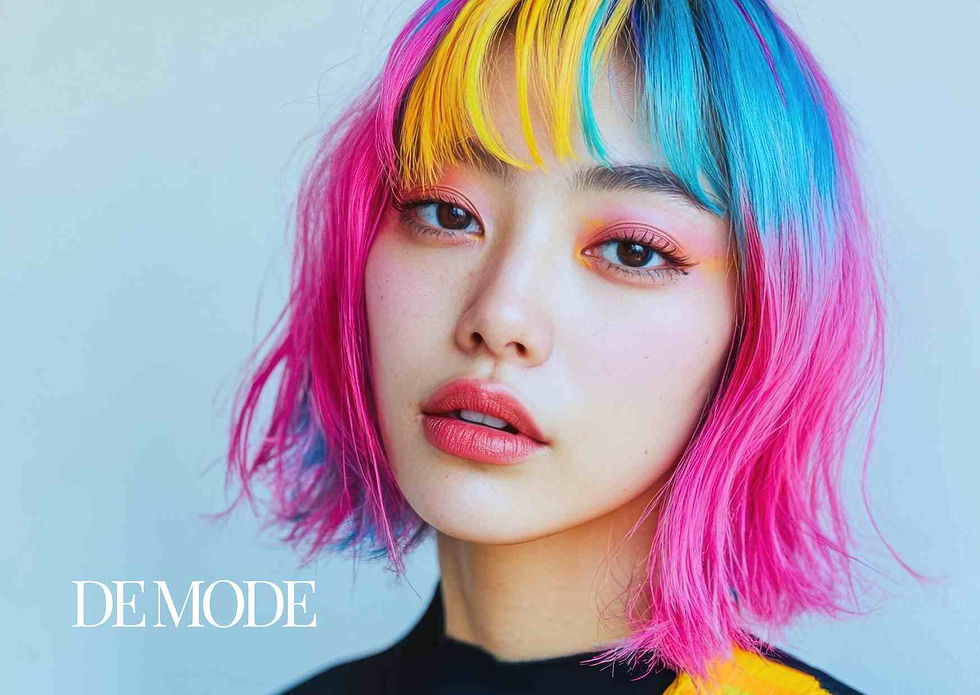"FROM AMATEUR TO PRO - A BEGINNER'S GUIDE TO PHOTOGRAPHY EQUIPMENT": DE MODE GLOBAL
- DE MODE

- Feb 27, 2023
- 3 min read
ORIGINALLY PUBLISHED IN DE MODE
Article Published on: 27 FEB 2023 | www.demodemagazine.com
Photography is an art that has been around for centuries, and in recent years it has become more accessible to people of all skill levels. However, the abundance of photography equipment on the market can be overwhelming, especially for beginners who are just starting out. In this article, we will explore the essential equipment needed for photography and offer tips on how to choose the right equipment for your needs.
Camera
The first piece of equipment needed for photography is, of course, a camera. There are many options available, including point-and-shoot cameras, DSLRs, and mirrorless cameras. Point-and-shoot cameras are simple to use and affordable, making them a good option for beginners. However, if you're looking to take your photography to the next level, a DSLR or mirrorless camera is a better choice. These cameras offer more control over settings such as aperture, shutter speed, and ISO, allowing you to create more creative and professional-looking images.

Lens
The lens is the most important piece of equipment when it comes to capturing great photos. Most cameras come with a kit lens, but investing in additional lenses can help you achieve a wider range of shots. There are many types of lenses available, including wide-angle, telephoto, and macro lenses. Wide-angle lenses are great for capturing landscapes and architecture, while telephoto lenses are ideal for sports and wildlife photography. Macro lenses allow you to capture close-up shots of small objects, such as flowers or insects.

Tripod
A tripod is an essential piece of equipment for any photographer. It helps stabilize your camera and allows you to take sharper images, especially in low-light situations. Tripods come in different sizes and materials, so it's important to choose one that is sturdy and fits your camera's weight. Carbon fiber tripods are lightweight and easy to carry around, while aluminum tripods are more affordable and durable.

Memory Cards
Memory cards are essential for storing your photos. There are many types of memory cards available, including SD, CF, and XQD cards. It's important to choose a memory card with enough storage capacity to hold all your photos. You should also choose a card with a fast write speed, which is especially important if you shoot in burst mode or shoot video.

Camera Bag
A camera bag is essential for protecting your camera and lenses while you're out and about. There are many types of camera bags available, including backpacks, shoulder bags, and messenger bags. Look for a bag that is comfortable to carry, has enough space for all your equipment, and offers protection from the elements.

Filters
Filters are a great way to enhance your photos and add creative effects. There are many types of filters available, including polarizing filters, neutral density filters, and graduated filters. Polarizing filters help reduce glare and reflections, while neutral density filters allow you to shoot with a slower shutter speed in bright light. Graduated filters help balance the exposure of your photos, especially when shooting landscapes.

External Flash
An external flash is an essential piece of equipment for indoor photography, especially in low-light situations. Most cameras come with a built-in flash, but these are often not powerful enough for professional use. External flashes are more powerful and offer more control over the direction of the light. Look for a flash that is compatible with your camera and offers features such as TTL metering and manual control.

Editing Software
Editing software is an essential tool for photographers. There are many types of editing software available, including Adobe Lightroom, Photoshop, and Capture One. These programs allow you to edit your photos, adjust exposure and color balance, and add creative effects. Look for software that is easy to use and fits your budget.




Comments